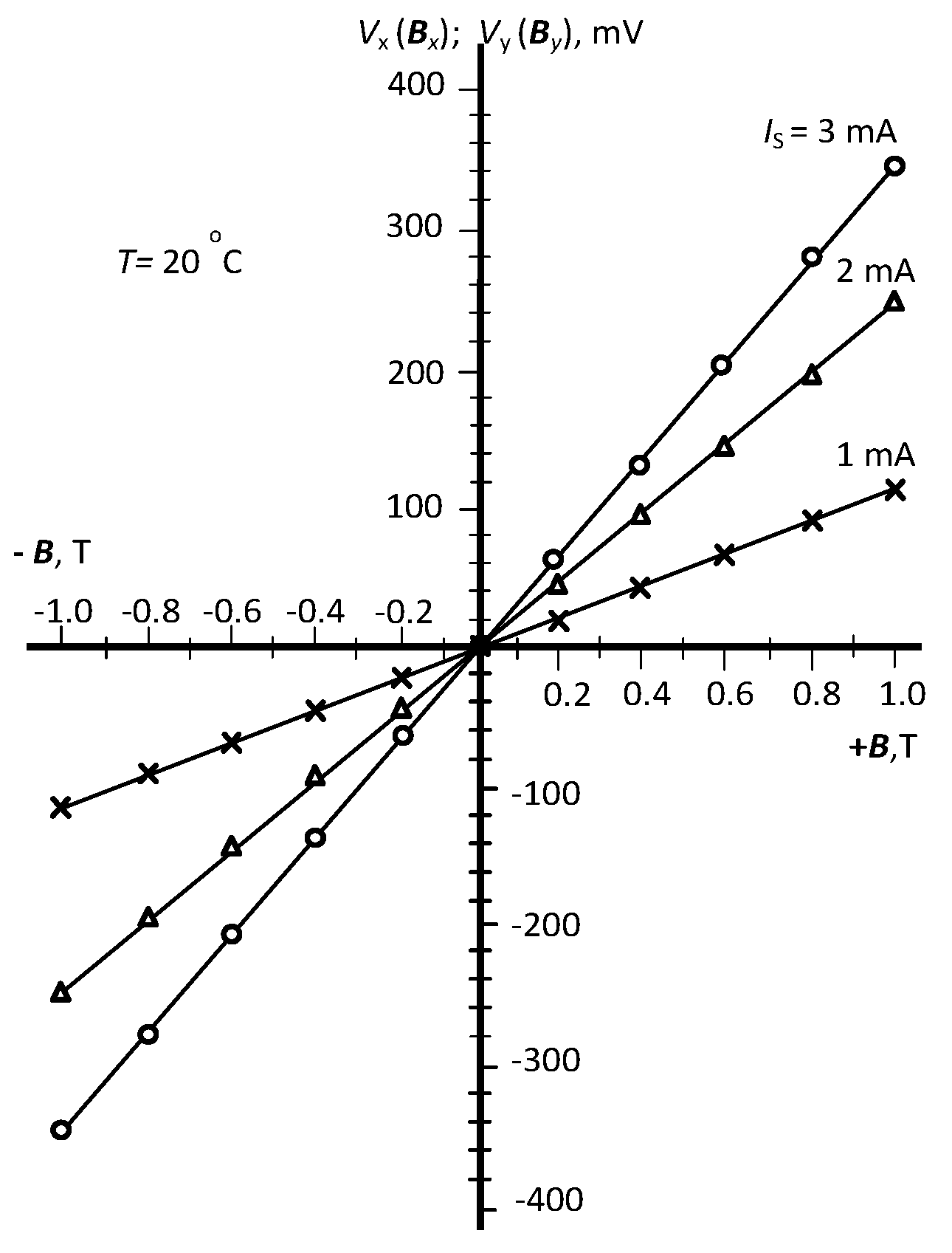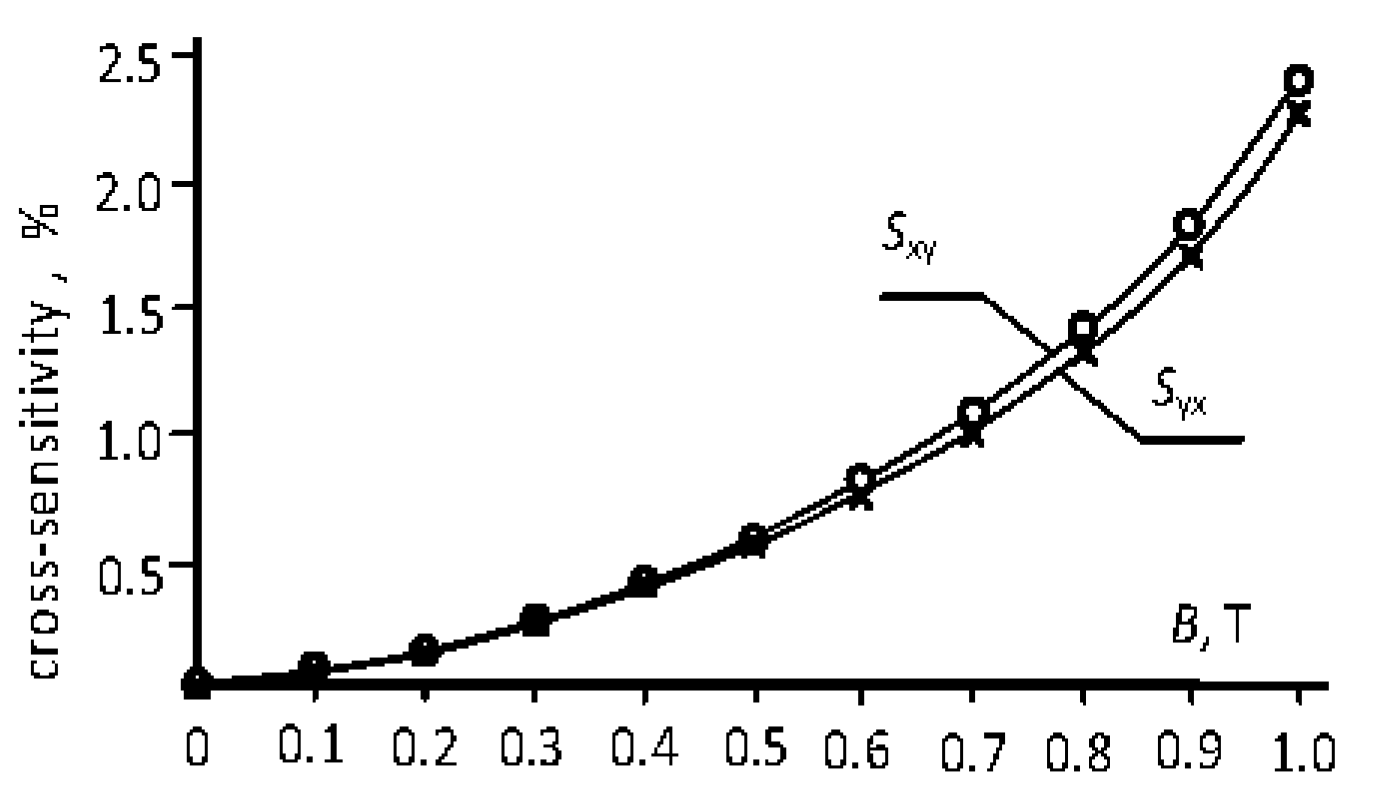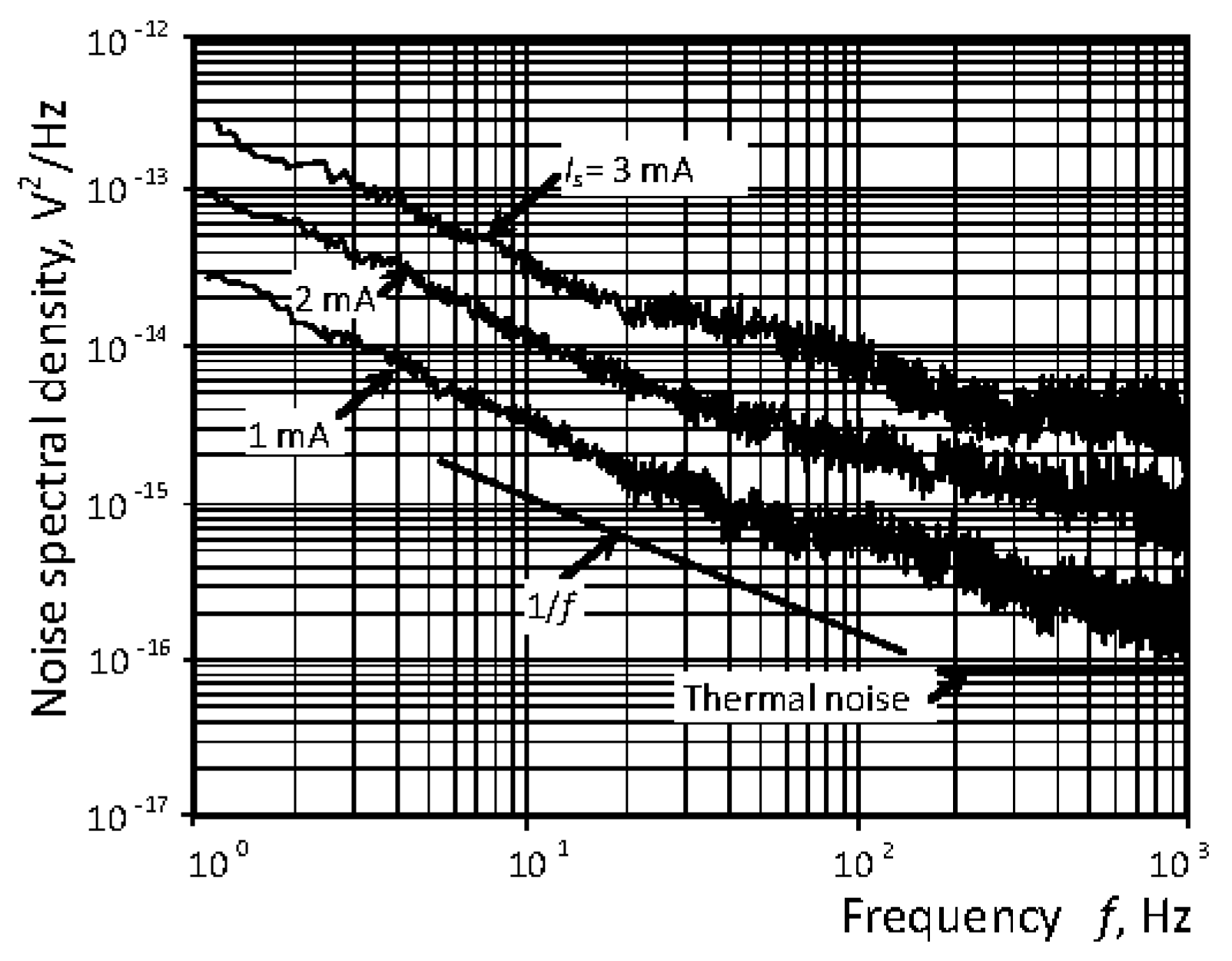2D In-Plane Sensitive Hall-Effect Sensor †
Abstract
:1. Introduction
2. Sensor Design and Operation Principle
3. Results
4. Conclusions
Acknowledgments
References
- Roumenin, C. Solid State Magnetic Sensors, Elsevier, 1994; Microsensors for magnetic field. In MEMS—A Practical Guide to Design, Analysis and Application; Korvink, J.G., Paul, O., Eds.; William Andrew Publisher: Norwich, NY, USA, 2006; pp. 453–521. [Google Scholar]
- Ramsden, E. Hall Effect Sensors—Theory and Application, 2nd ed.; Elsevier: Amsterdam, Netherland, 2006. [Google Scholar]
- Kaufmann, T. On the Offset and Sensitivity of CMOS-Based Five-Contact Vertical Hall Devices; Der Andere Verlag: Tonning, Germany, 2013; Volume 21, p. 147. [Google Scholar]
- Demierre, M.; Schurig, E.; Schott, C.; Besse, P.-A.; Popovic, R. Contactless 360° absolute angular CMOS microsystem based on vertical Hall sensors. Sens. Actuators A 2004, 116, 39–44. [Google Scholar] [CrossRef]
- Pascal, J.; Hebrard, L.; Frick, V.; Blonde, J.P. 3D Hall probe integrated in 0.35 um CMOS technology for magnetic field pulses measurements. In Proceedings of the 6th International IEEE Northeast Workshop on Circuits and Systems and TAISA 2008, Montreal, Quebec, Canada, 22–25 June 2008; pp. 97–100. [Google Scholar]
- Yu, C.-P. The Study and Application of a 2D Folded Hall Sensor Chip; National Taipei University of Technology: Taipei, Taiwan, 2012; p. 88. [Google Scholar]
- Yu, C.-P.; Sung, G.-M. Two-dimensional folded CMOS Hall device with interacting lateral magnetotransistor and magnetoresistor. Sens. Actuators A 2012, 182, 6–15. [Google Scholar] [CrossRef]
- Wouters, C.; Vranković, V.; Rössler, C.; Sidorov, S.; Ensslin, K.; Wegscheider, W.; Hierold, C. Design and fabrication of an innovative three-axis Hall sensor. Sens. Actuators A 2016, 237, 62–71. [Google Scholar] [CrossRef]
- Sander, C.; Leube, C.; Paul, O. Three-dimensional magnetometer based on subsequent measurement principle. Sens. Actuators A 2015, 222, 329–334. [Google Scholar]
- Roumenin, C.; Kostov, P. Planar Hall-Effect Device. Bulg. Patent No. 37208/26.12.1983, 26 December 1983. [Google Scholar]
- Lozanova, S.V.; Roumenin, C.S. Parallel-field silicon Hall effect microsensors with minimal design complexity. IEEE Sens. J. 2009, 9, 761–766. [Google Scholar] [CrossRef]
- Schott, C.; Popovic, R. Integrated 3-D Hall magnetic field sensor. In Proceedings of the Transducers ’99, Sendai, Japan, 7–10 June 1999; Volume 1, pp. 168–171. [Google Scholar]




Publisher’s Note: MDPI stays neutral with regard to jurisdictional claims in published maps and institutional affiliations. |
© 2018 by the authors. Licensee MDPI, Basel, Switzerland. This article is an open access article distributed under the terms and conditions of the Creative Commons Attribution (CC BY) license (https://creativecommons.org/licenses/by/4.0/).
Share and Cite
Lozanova, S.; Kolev, I.; Ivanov, A.; Roumenin, C. 2D In-Plane Sensitive Hall-Effect Sensor. Proceedings 2018, 2, 711. https://doi.org/10.3390/proceedings2130711
Lozanova S, Kolev I, Ivanov A, Roumenin C. 2D In-Plane Sensitive Hall-Effect Sensor. Proceedings. 2018; 2(13):711. https://doi.org/10.3390/proceedings2130711
Chicago/Turabian StyleLozanova, Siya, Ivan Kolev, Avgust Ivanov, and Chavdar Roumenin. 2018. "2D In-Plane Sensitive Hall-Effect Sensor" Proceedings 2, no. 13: 711. https://doi.org/10.3390/proceedings2130711




